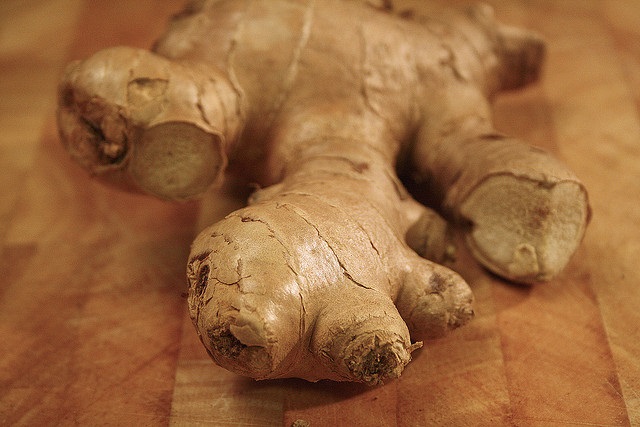The recommended foods and portions that we are all familiar with come from the USDA Food Pyramid published in 1992. The first government focus on nutrition was in Sweden in 1972, with a “food circle”; promoting the “Basic Foods” compared to supplemental.
Based on their recommendations, a popular Swedish Grocery store created the first Food Pyramid. They created a pyramid divided into basic foods at the base, including milk, cheese, margarine, bread, cerealsand potato; a large section of supplemental vegetables and fruit; and an apex of supplemental meat, fish and egg; to indicate the size of portions that people should be eating.
The USDA, after multiple iterations of pyramids, now has “My Plate”.
This current recommendations is still missing what you need in your diet; a food group essential to your biomechanics processes and brain function. Chinese medicine and Ayurvedic medicine have it included in their essential foods/medicines.

Introducing certain spices into your foods will not only help them taste even better, but will infuse needed nutrient to help you feel better, and preform at peak levels. Mentally and physically.
- Turmeric

SA-2.0], via Flickr
Turmeric is a plant similar to ginger, is grown grown primarily in Asia, particularly South India, and Central America. Turmeric has been used in Ayurvedic medicine for thousands of years, for many conditions, including respiratory system problems, rheumatism, pain, and fatigue. Currently it is, advertised as a dietary supplement for inflammation, cancer, and other conditions.
It can work an antibacterial through bacterial cytokinesis and inhibition of NF-κB activation, as well as in synergy with synthetic antibiotics ; as an antibiofilm – likely though up regulation of certain genes; as an anti viral, through inhibitory activity against Inosine monophosphate dehydrogenase; and as an antifungal, through down regulation of ergosterol and of membrane ATPase of fungal cell causing death(1)
It has anti-cancer effects primarily shown in colorectal cancers and thyroid cancers, and with weaker results in many others (2).
It also has anti-inflammatory activity but COX-2 inhibition, which will also suppress tumor angiogenesis. (3)
Additionally there are some prelim results of studies and more work being done on Tumerics effect on colitis, diabetes, surgical pain, reducing plaque, Alzheimer’s disease, rheumatoid arthritis, and prostate and colon cancers (4)
2. Ginger

Not only does it make things taste great from sushi to sodas, there are many health benefits that are too numerous to discuss here. You can see a quick summary here. Most importantly it has a strong effect on multiple causes of nausea and vomiting, osteoarthritis and reduction/prevention of atherosclerosis. (5, 6) It also has antibiotics effect when combined with synthetic antibiotics. (7)
3. Cayenne Pepper
Capsaicin in cayenne peppers has a transient effect on metabolism in the body that can increase thermogenesis. However this effect has not been shown to significantly affect weight loos by itself, it has a host of other benefits of increasing mitochondrial output, due to higher rates of fat oxidation (8)Through the same mechanism it can reduce hunger; It works as an antimicrobial agent in the gut, and aids in digestion. (9, 10, 11, 12, 1314)
While many of us may thing that Capsaicin can cause some pretty intense oral pain in our favorite spicy dishes, systemically it may reduce production of substance P(15). Resulting in less sensation of pain by the brain (16).
4. Cinnamon

In-vitro and in-vivo effects on blood pressure, glycemic control and lipids. “The beneficial effects of CZ In-vivo includes; a) attenuation of weight loss associated with diabetes, b) reduction of Fasting Blood Glucose, c) reducing LDL and increasing HDL cholesterol, d) reducing HbA1c and e) increasing circulating insulin levels . In addition CZ also showed beneficial effects against diabetic neuropathy and nephropathy.” (17)
So not only does it have real well studied health effects, it makes everything taste better. Try cinnamon in your coffee, you likely drink a lot of it, so you will be sure to get a good dose of cinnamon every day.
5. Oregano
This common, flavorful spice, common in many italianfavorites, has vitamins K and E, calcium, iron, and manganeseas important minerals for you. It also has immense amounts of antioxidants; four times more than blueberries, making it one of the most densesources of antioxidants.
Oregano has been shown to be high in antioxidants. That is likely how it has been able to have an effect on antimicrobial activity. (18, 19)
There are multiple in vitro studies showing that there are antiviral (20,21), anti- tumor effects (22, 23) , as well as anti-anti-inflammatory effects.
Look for the next article on “ what’s missing from your diet” and “your brain health” Coming soon.

